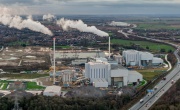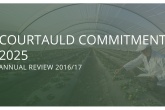UK food waste figures restated to fit international standard
 The UK’s food waste data, setting out how much food is consumed, recycled and wasted across the country, has been restated using new international standards of measurement, resulting in a reduction in the figure for overall household food waste (HHFW).
The UK’s food waste data, setting out how much food is consumed, recycled and wasted across the country, has been restated using new international standards of measurement, resulting in a reduction in the figure for overall household food waste (HHFW).
The new Food Loss and Waste Accounting and Reporting Standard (FLWS) is a global measure that will align food waste reporting across the world, enabling countries to more easily compare their food waste data.
The standard has been developed by a partnership of international bodies including the World Resources Institute, the United Nations Environment Programme, the Consumer Goods Forum and the Waste and Resources Action Programme (WRAP), the UK’s central sustainability charity working to improve how the country uses and reuses resources.
Released today (22 May), the updated figures for the UK, which were recorded in 2015, no longer categorise food waste as ‘avoidable’, ‘possibly avoidable’ or ‘unavoidable’, the terms that were previously used, instead splitting wasted food into two categories: ‘edible parts’ and ‘inedible parts’. This change effectively combines ‘avoidable’ and ‘possibly avoidable’ food waste into one category, removing the slightly indeterminate boundary between the two terms.
The implementation of the FLWS has resulted in a figure for ‘edible parts’ of five million tonnes (Mt), which is 70 per cent of the UK’s total HHFW. Previously, avoidable food waste was at 4.4 Mt, but the addition of ‘possibly avoidable’ has increased this. The figure for total post-farm food waste (from households, hospitality and food service, retail and manufacture) remains at 10.2 Mt, while HHFW has fallen from 7.3 Mt to 7.1 Mt, again due to a change in categorisation: under the FLWS, food fed to animals which was originally purchased for human consumption is no longer classified as waste.
Baseline for measuring progress
These restated 2015 figures will now act as the baseline for the Courtauld Commitment 2025, against which progress to reduce UK food waste will be measured. The Courtauld Commitment is a voluntary agreement signed by over 150 businesses, local authorities and trade organisations, aiming to reduce food and drink waste across the supply chain by 20 per cent over ten years, in line with the UN Sustainable Development Goal 12.3.
WRAP has not yet revealed the UK’s progress towards Courtauld 2025 targets. The first progress report is expected in 2019, while the 2016/17 annual review focused on how WRAP has been building foundations for the future, including updated food labelling guidance for retailers and a waste reduction programme for businesses in the hospitality, food service and manufacturing sectors. A previous iteration of the Commitment, Courtauld 3, which ran from 2013 to 2015, failed to meet the HHFW reduction target of five per cent, with WRAP reporting instead an increase in HHFW from 7 to 7.3 Mt.
 In light of these results, demand is growing in England for the government to take legislative steps to reduce food waste, namely by introducing mandatory collection of food waste by local authorities. In Northern Ireland and Wales, all councils offer some form of food waste collection, whether separate or mixed with garden waste, but less than 50 per cent of households in England have access to this service. Scottish regulations require food businesses producing more than five kilogrammes of food waste a week to recycle their waste, but does not obligate local authorities to collect this waste stream.
In light of these results, demand is growing in England for the government to take legislative steps to reduce food waste, namely by introducing mandatory collection of food waste by local authorities. In Northern Ireland and Wales, all councils offer some form of food waste collection, whether separate or mixed with garden waste, but less than 50 per cent of households in England have access to this service. Scottish regulations require food businesses producing more than five kilogrammes of food waste a week to recycle their waste, but does not obligate local authorities to collect this waste stream.
Read more: Food waste collections boost NI recycling rate to 47.1 per cent
Commenting on the new standard of measurement, WRAP Director Peter Maddox said: “We have some big activities planned for this year aimed at driving down food waste in the supply chain and in the home, and this is a good time to bring our numbers into line with the international standards. WRAP was instrumental in developing the Food Loss and Waste Accounting and Reporting Standard, and it’s imperative that all nations report using this approach so progress can be measured uniformly. Restating our own figures will encourage other countries to report using the standard, and consistency is crucial in the fight against food waste.
“I’m very pleased too that we can publish a more detailed assessment of food waste across the entire UK supply chain in the baseline for Courtauld 2025. This shows the full extent of food waste across the supply chain, and makes the scale of the problem very clear.
“Cutting food waste isn’t something any of us can do in isolation, and we all have a lot of work to do. But delivering Courtauld 2025 will mean 1.5 million tonnes less food ends up as waste every year, by 2025.”







